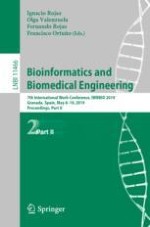2019 | OriginalPaper | Buchkapitel
Deciphering General Characteristics of Residues Constituting Allosteric Communication Paths
verfasst von : Girik Malik, Anirban Banerji, Maksim Kouza, Irina A. Buhimschi, Andrzej Kloczkowski
Erschienen in: Bioinformatics and Biomedical Engineering
Aktivieren Sie unsere intelligente Suche, um passende Fachinhalte oder Patente zu finden.
Wählen Sie Textabschnitte aus um mit Künstlicher Intelligenz passenden Patente zu finden. powered by
Markieren Sie Textabschnitte, um KI-gestützt weitere passende Inhalte zu finden. powered by
